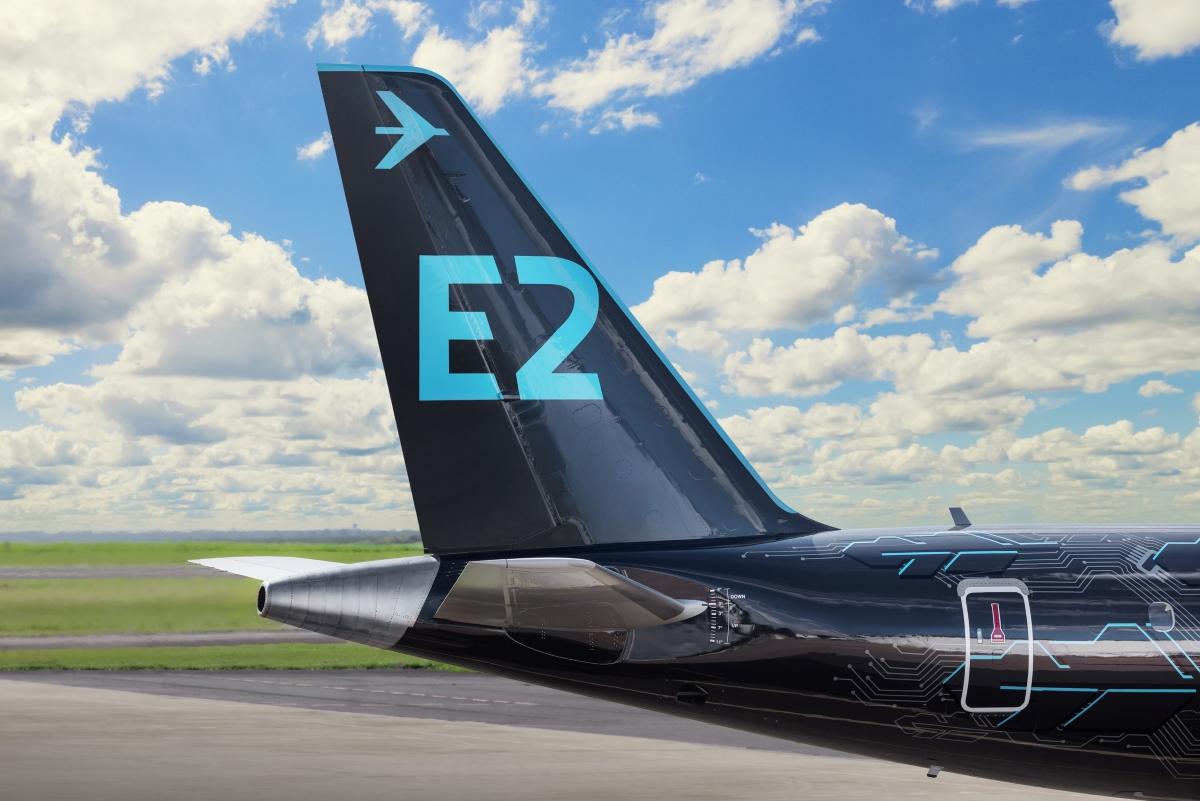E-Jets E2s Now, They’re Even Better.

During the Farnborough Airshow, we announced some impressive news, improved fuel burn, an automated take-off feature, an optimized seating configuration, more range, and reduced operating cost for the E2s. Here’s what these mean for our customers.
- Even Lower Fuel Burn
At EMBRAER, we have a conservative approach to fuel burn numbers when we introduce a new airplane. The E2 family was no exception. The aircraft that was already the benchmark in terms of fuel consumption was in fact even better, with the E2s being more fuel efficient than we had advertised.
Now that we’ve analyzed years of real data from operators around the world, combined with improvements in systems and aerodynamics, we can confirm that fuel consumption is 2.5% lower than what we originally stated.
The E195-E2, for example, is now 12.5% more fuel efficient than its closest competitor.
- The E195-E2 Now Flies Even Further
A higher 62,500kg Max Take Off Weight is now certified for the E195-E2. When you combine this with the lower fuel burn, the maximum range increases from 2,600nm to 3,000nm.
- Even Longer Engine Time on Wing
The climb thrust on the GTF engine is now optimized so that stress over its components is reduced. That translates to 10% longer time-on-wing for both E2s, and cost savings of about US$0.5 million over 15 years.
- Even More Seats
For customers seeking to maximize revenue, we now offer an extra row of 4 seats for most configurations on the E195-E2. We made some design adjustments to the forward and aft cabin so that, for example, a typical 136-seat layout would increase to 140 seats. Those 4 additional seats can generate about US$4.5 million per aircraft over 15 years. We still offer a 146-seat in a high-density configuration.
Our customers have more seat options, too. Our catalogue now includes Recaro seats that are available for both line-fit and retrofit.
- Embraer Enhanced Takeoff System for More Payload and Range
Embraer is the first manufacturer to introduce automated take off. Our Embraer Enhanced Takeoff System is truly cutting-edge. We developed and patented a software upgrade to the existing flight control system that automatically rotates the E2 more precisely yet at the same speed as a manual take off. The result is a more efficient rotation moment and flight trajectory that requires less runway.
Consequently, the E2s can carry more payload and fly longer distances from airports with short runways such as London City and Florence. For example, E2s equipped with E²TS can fly 350nm further from LCY, which now brings cities in Turkey and North Africa within range.
Our E2s are already great airplanes. And they just keep getting better.
Arjan Meijer
President & CEO
Embraer Commercial Aviation
Comments
It's just another step to eliminate human flight crew from the cockpit. I have long since stopped flying as in retirement, I have no place to go. I don't worry about it anymore except if they try to totally automate commercial aviation, I would never consider flying again if the need arose.